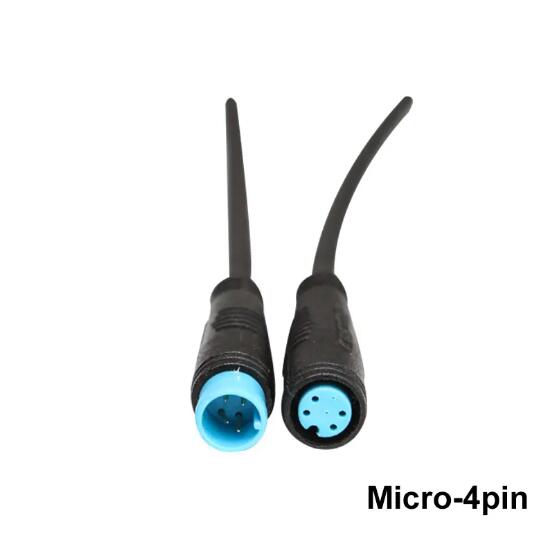Unveiling the Anatomy of Signal Connectors: Exploring Key Components
2024-04-11
In the intricate world of electronic communication, where devices exchange information with lightning speed, Signal Connectors stand as the gatekeepers, facilitating the seamless transmission of data between components. Behind their seemingly simple exterior lies a complex array of components meticulously engineered to ensure reliable connectivity and signal integrity. Let's embark on a journey to unveil the key components that make up the anatomy of Signal Connectors.
1. Connector Body: The outer shell or housing of a Signal Connector serves as its protective enclosure, housing the internal components and providing mechanical support. Connector bodies come in various shapes, sizes, and materials, ranging from plastic to metal, depending on the application requirements. The design of the connector body also determines factors such as environmental sealing, mating/unmating forces, and overall durability.
2. Contacts: At the heart of every Signal Connector are the electrical contacts, which serve as the interface points for signal transmission between devices. Contacts come in different configurations, including pins, sockets, and pads, and are typically made of conductive materials such as copper, gold, or phosphor bronze. The quality of contacts directly impacts signal integrity, with factors such as contact resistance, contact force, and plating thickness playing crucial roles in ensuring reliable connectivity.
3. Insulators: Insulators are non-conductive materials that separate and insulate individual contacts within a Signal Connector, preventing unintended electrical contact and short circuits. Insulators also provide mechanical support and alignment for the contacts, ensuring proper mating and alignment between connector halves. Common insulator materials include plastics, ceramics, and thermoset resins, chosen for their dielectric properties and mechanical strength.
4. Shielding: In applications where electromagnetic interference (EMI) is a concern, Signal Connectors may incorporate shielding components to minimize signal distortion and noise. Shielding typically takes the form of metal enclosures or conductive coatings surrounding the connector contacts, effectively blocking external electromagnetic fields from interfering with signal transmission. Shielding also helps contain electromagnetic emissions generated by the connector itself, reducing the risk of interference with nearby electronics.
5. Locking Mechanisms: To ensure secure and reliable connections, Signal Connectors often feature locking mechanisms that prevent accidental disconnection due to vibration, shock, or movement. Common locking mechanisms include threaded couplings, bayonet locks, snap-in latches, and push-pull connectors, each offering varying levels of security and ease of use depending on the application requirements.
6. Strain Relief: In applications where cables are connected to Signal Connectors, strain relief components are essential for preventing cable damage and maintaining electrical continuity. Strain relief mechanisms may include cable clamps, grommets, or molded features on the connector housing designed to secure and protect the cable from excessive bending, pulling, or twisting forces.
7. Sealing and Environmental Protection: For outdoor or harsh environment applications, Signal Connectors may incorporate sealing features to protect against moisture, dust, chemicals, and other environmental contaminants. Sealing methods may include gaskets, O-rings, potting compounds, or hermetic seals, ensuring that the connector maintains reliable performance even in challenging conditions.
8. Identification and Polarization: To facilitate proper mating and prevent misconnection, Signal Connectors often incorporate identification features such as keying, polarization, or color-coding. These features ensure that connectors are mated correctly, preventing damage to equipment and ensuring signal integrity. Keying mechanisms may include asymmetric shapes, alignment pins, or coding notches that ensure connectors can only be mated in the correct orientation.
In conclusion, the key components of Signal Connectors work in harmony to enable reliable connectivity and signal transmission between electronic devices. From the robust housing and precision contacts to the shielding and sealing features that protect against environmental hazards, each component plays a vital role in ensuring the seamless exchange of data across diverse applications. So, the next time you plug in a cable or connect a device, take a moment to appreciate the intricate engineering behind the humble Signal Connector, the unsung hero of modern electronics.



